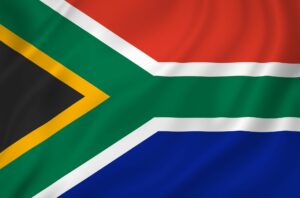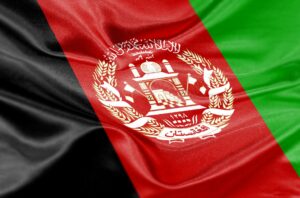Navigating the cost of living in Dominica, a gem in the Lesser Antilles offers a fascinating glimpse into the financial landscape of Caribbean life. As we explore the nuances of everyday expenses on the island, from housing to groceries and transportation to healthcare, we uncover a pattern of attractive and pragmatic affordability. In 2024, this tropical paradise continues to provide a cost-effective alternative to its more commercially developed neighbors, with its unspoiled natural beauty and a concerted effort to avoid mass tourism’s pitfalls. This introduction sets the stage for a comprehensive examination of the cost of living in Dominica. We provide valuable insights for those considering making this serene and vibrant island their home.
Housing and Utilities
Renting vs. Buying Property
In Dominica, you’ll find yourself weighing the options of renting against purchasing property, considering the island’s relatively low cost of living. This is especially notable when you compare it to other Caribbean islands and regions like the US or Europe. The real estate market in Dominica remains accessible, thanks to the country’s dedication to preserving its natural beauty and avoiding the overdevelopment often seen with mass tourism.
This approach has resulted in a property market within reach for locals and expatriates. You can rent or buy without the financial pressures you might expect you’d find in more developed tourist hotspots.
Average Prices for Apartments and Houses
Dominica’s housing market offers a variety of options to fit different budgets and preferences. If you’re interested in renting, a one-bedroom apartment in the city center typically costs around USD 325. On the other hand, a similar apartment outside the city center might be priced at approximately USD 315.
Families or individuals looking for more space can find a three-bedroom apartment in the city center for about USD 1,335. The cost drops to USD 885 for comparable accommodation outside the city center. When it comes to buying property, the cost per square foot in the city center averages USD 11. The price per square foot is significantly lower outside the city center at USD 4.20.
Monthly Utility Costs
Utility bills in Dominica are quite reasonable, contributing to the overall affordable cost of living; for a standard 85 square meter apartment, utilities—which include heating, electricity, and gas—average around USD 111 per month for a couple. This amount reflects the island’s temperate climate and the efficiency of its utility services, which help residents keep their estimated monthly costs and expenses moderate.
Internet and Communication Expenses
The cost of staying connected in Dominica is fairly low, with unlimited data and internet services averaging USD 65 per month. An 8 Mbps internet connection is priced at around USD 15.50 per month for a more detailed cost analysis. These communication costs are important for both locals and expatriates, especially in a world where being online is crucial for a wide range of daily activities, both personal and professional.

Food and Groceries
Cost of Local vs. Imported Groceries
The island’s markets are filled with local products such as rice, fresh bread, and a variety of fruits and vegetables at competitive prices. A pound of white rice is available for just USD 0.50, and a loaf of fresh white bread for USD 2.30. However, imported items like a gallon of milk, which is not typically produced on the island, are more expensive at USD 19.
Dining Out: Restaurants and Street Food
A range of popular dining options is available to suit various budgets. An inexpensive meal at a restaurant is priced at USD 7.40. A more upscale three-course meal for two at a mid-range restaurant is approximately USD 58. Street food presents an even more economical option, reflecting the island’s affordable lifestyle.
Alcohol and Tobacco Prices
The cost of alcoholic beverages and tobacco products reflects both local production and importation costs. A pint of domestic beer on tap is available for USD 1.85, whereas an imported beer in a small bottle costs slightly more at USD 2.60. For smokers, a 20-pack of Marlboro cigarettes is priced at USD 7.40, indicating that social drinking and smoking can be more economical activities compared to many other locations.
Agricultural Products and Self-Sufficiency
The island’s emphasis on agriculture contributes to its self-sufficiency and the affordability of local goods. The fertile land produces an abundance of crops, which is evident in the local markets where items like a head of lettuce are sold for just USD 1.10. This agricultural focus supports the economy and helps residents save on food expenses by relying on locally sourced produce rather than more costly imported goods.

Transportation in Dominica
Public Transport Fares
The government has implemented new bus fares and taxi rates, effective since March 2023, following recommendations from the Dominica Transport Board and input from the Airport Taxi Operators Association and bus drivers’ associations. The fare adjustments were made to formalize previously informal prices, particularly for routes to and from the airport. The updated fares reflect an increase of $1.00 to $1.50 for longer bus routes emanating from Roseau to various communities. The fare increase is between $0.25 and $0.75 for shorter trips or inter-village travel.
These fare changes are a response to the escalating costs associated with fuel, vehicle procurement, spare parts, maintenance, and insurance. For those utilizing services to and from Douglas Charles Airport, the government has also set standardized rates for shuttle and hired services.
Owning a Car: Purchase and Maintenance Costs
Acquiring a vehicle in Dominica involves several expenses beyond the initial purchase price. Duties and taxes are levied on the Customs Value, which encompasses the cost of the vehicle, insurance, and freight. An Environmental Surcharge is imposed on used vehicles, amounting to USD 1,110 for those over five years old and 1% of the CIF Value for newer ones. These expenses, coupled with regular maintenance and the rising cost of spare parts, contribute to the total cost of vehicle ownership.
Fuel Prices and Taxes
The cost of octane-95 gasoline is currently USD 1.15 per liter, while diesel is available at USD 1.10 per liter. Global oil prices and local taxes influence these prices.
Alternative Transportation Options
Taxis and rental cars offer convenient transportation, with rental services available in Roseau and at the airports. Four-wheel drives are advisable due to the island’s terrain. Public buses with an “H” on their license plates provide an economical travel option. They operate on main roads and can be flagged down for a ride. Bus fares are reasonable, with prices depending on the distance traveled.
For instance, the journey from Roseau to the Roseau Valley, encompassing destinations like Wotten Waven and Trafalgar, lasts about 20 to 30 minutes. Reaching Laudat from Roseau takes approximately 40 minutes. In contrast, taxi services offer more dependability but at a higher cost, with a trip from Roseau to Laudat typically costing around USD 80 per person.

Health Care and Education
Insurance Costs and Health Services
The health care system in Dominica is predominantly financed through government revenue, allowing residents to access a range of medical services without direct fees. The nation’s health expenditure was previously 4.2% of GDP, equating to the equivalent of approximately USD 418 per capita.
Medical services are delivered through a network of 7 health centers and 44 clinics. The Princess Margaret Hospital serves as the primary healthcare facility, supplemented by additional hospitals in Portsmouth, Marigot, and Grand Bay. For advanced tertiary care, patients may need to travel abroad.
Groups such as minors under 17, pregnant women, the indigent, and individuals with infectious diseases are exempt from medical fees, reflecting the state’s commitment to ensuring health care availability. Despite the provision of free community health services, the scope of specialized services is limited, prompting some to opt for private health insurance.
Providers like Allianz, Cigna Global Health, and Clements Worldwide offer comprehensive insurance plans that meet the needs of residents.
Private vs. Public Healthcare Systems
The public health care system provides free services, while the private sector offers expedited and sometimes more comprehensive care. Although community health services are free of charge, the private sector is an option for those seeking a wider array of services or who prefer the convenience and reduced wait times associated with private facilities.
Educational Institutions and Tuition Fees
The educational landscape in Dominica encompasses both state-funded and private institutions. Public education is provided at no cost, and attendance is compulsory for children between the ages of 5 and 16, ensuring universal access to education.
While the island hosts a number of private schools, tertiary education is primarily offered by private entities that charge tuition. International undergraduates typically incur annual fees of USD 11,900, while postgraduate students may pay around USD 17,850.
Additional Educational Costs (Books, Uniforms, etc.)
The financial commitment to education extends beyond tuition, including books, uniforms, and other scholastic materials. For those with preschool-aged children, the average monthly fee for a full day at a private preschool or kindergarten is USD 140.
University students opting for on-campus housing will incur extra charges, which are integral to the overall educational expenditure in Dominica.

The Cost Of Living In Dominica Vs. Other Caribbean Islands
Cost Of Living In Dominica Vs. Antigua & Barbuda
When examining the cost of living between Dominica and Antigua & Barbuda, it’s evident that dining out in the latter country can be more expensive due to its more developed tourism sector. For instance, a meal at a casual dining establishment in Antigua & Barbuda will generally exceed the cost of a similar meal in Dominica.
In the realm of groceries, items such as bread and milk may be pricier in Antigua & Barbuda, reflecting higher import duties and taxes. Transportation expenses, including gasoline and public transit passes, are also more affordable in Dominica. The rental market in Dominica offers competitive rates, with monthly costs for a 1-bedroom city center apartment being more economical than in Antigua & Barbuda, where the demand from expatriates and tourists can inflate prices.
Childcare and utility costs, while not specified for Dominica, are typically lower than in more economically developed Caribbean nations.
Cost Of Living In Dominica Vs. St Kitts & Nevis
St Kitts & Nevis, known for attracting affluent investors through its Citizenship by Investment program, presents a contrast in living expenses when compared to Dominica. Despite both islands offering citizenship programs, Dominica’s day-to-day expenses remain among the lowest in the region.
In Dominica, the average rent and monthly expenses, which encompass local transport and utilities, are modest. Conversely, St Kitts & Nevis may exhibit elevated living costs due to its luxury market appeal.
Leisure activities, such as enjoying a domestic beer or going to the cinema, are more budget-friendly in Dominica. Clothing and personal items, reflecting the higher demand for branded goods in St Kitts & Nevis, are likely to carry a higher price tag.
Cost Of Living In Dominica Vs. Saint Lucia
Saint Lucia’s economic landscape influences its cost of living index, which can be higher than Dominica’s. For example, a cappuccino and a three-course meal for two is generally more affordable in Dominica.
Grocery items such as bananas and tomatoes indicate Dominica’s lower cost of living. In contrast, Saint Lucia’s smaller agricultural output and increased import reliance can lead to higher food prices.
The real estate market in Dominica is competitive, with the cost per square meter for city center apartments being more accessible. Saint Lucia’s popularity with tourists and higher living standards contribute to increased housing, transportation, and utilities costs.
Embracing Affordability in Dominica
Discovering the cost-effective lifestyle of Dominica promises an appealing prospect for budget-conscious expatriates and locals alike. Whether it’s the welcoming real estate market that offers a respite from the overpriced frenzy of other island economies or the fresh local produce that supports a healthy and sustainable way of life, Dominica stands out among many countries as a financially viable sanctuary.
Comparative analyses reveal that, amidst peers in the Caribbean, Dominica holds its own as an island where affordability doesn’t compromise quality. From restaurant prices to modest transportation fares to free public education, the nation weaves together a cost structure that is as attractive as its lush rainforests and vibrant culture.
For those yearning for a tropical haven that respects their wallet and their desire for quality living, a visit to Dominica in 2024 is an idyllic choice.
FAQ’s
Can I Move to Dominica?
Yes, you can move to Dominica. The process typically involves obtaining a visa or residency permit, depending on your nationality and the length of your stay. Applicants often need to meet specific requirements, such as financial stability and a clean criminal record. Contact us today to learn more!
Which Caribbean Island has the Highest Cost of Living?
The Caribbean island with the highest cost of living is often considered the Cayman Islands. The high cost is attributed to its status as a major financial center, expensive real estate, and the importation of most goods.
Is Dominica Good for Living?
Dominica is known for its natural beauty, mild climate, and relatively low crime rate, making it an attractive place for many. However, living in Dominica might involve adjusting to a slower pace of life and limited amenities compared to larger countries. The quality of life largely depends on personal preferences and lifestyle expectations.
How Much Money Do You Need to Live in Dominica?
The money needed to live in Dominica varies depending on lifestyle and location. A modest lifestyle outside major cities could cost around USD 1,000 to USD 1,500 monthly. However, living in prime areas or maintaining a higher standard of living would require a significantly larger budget.





